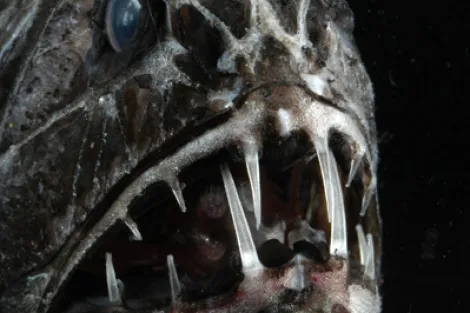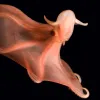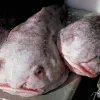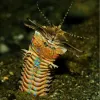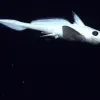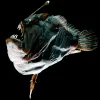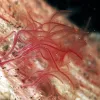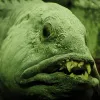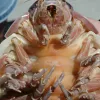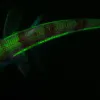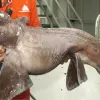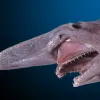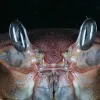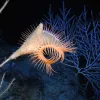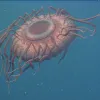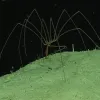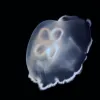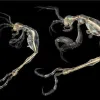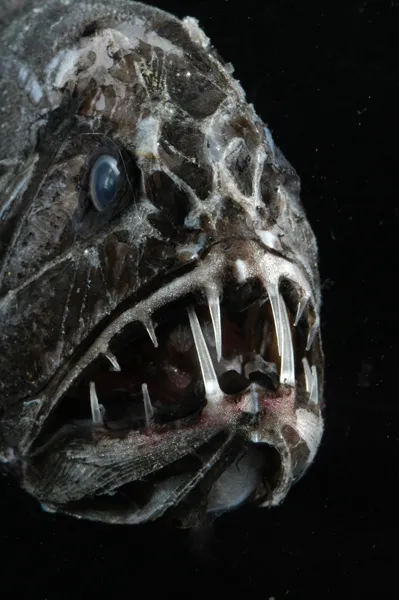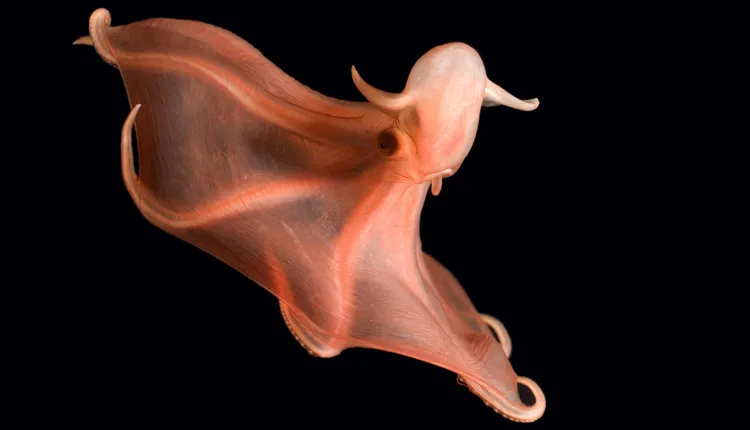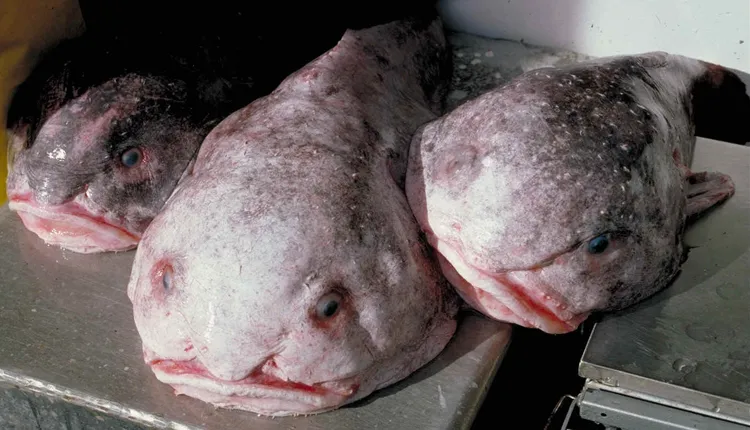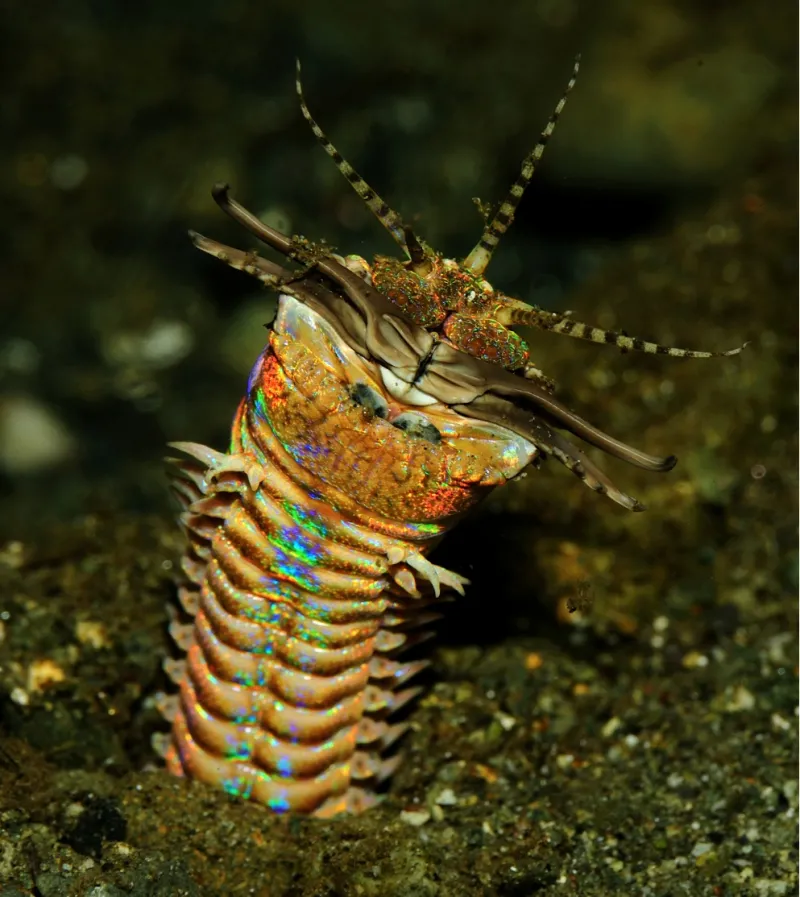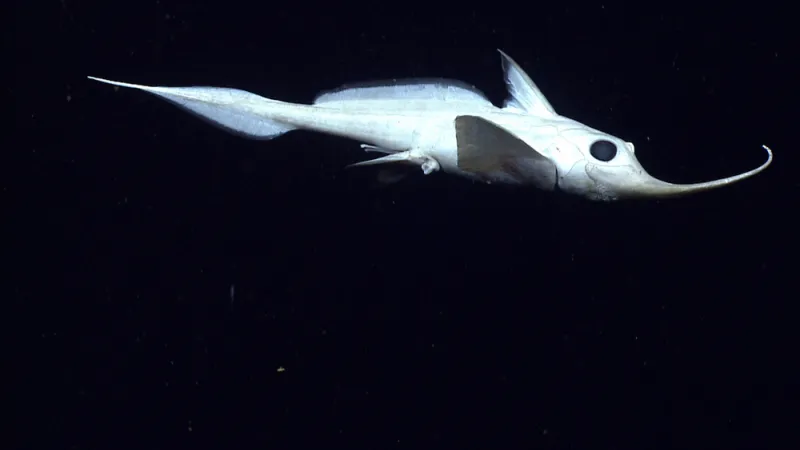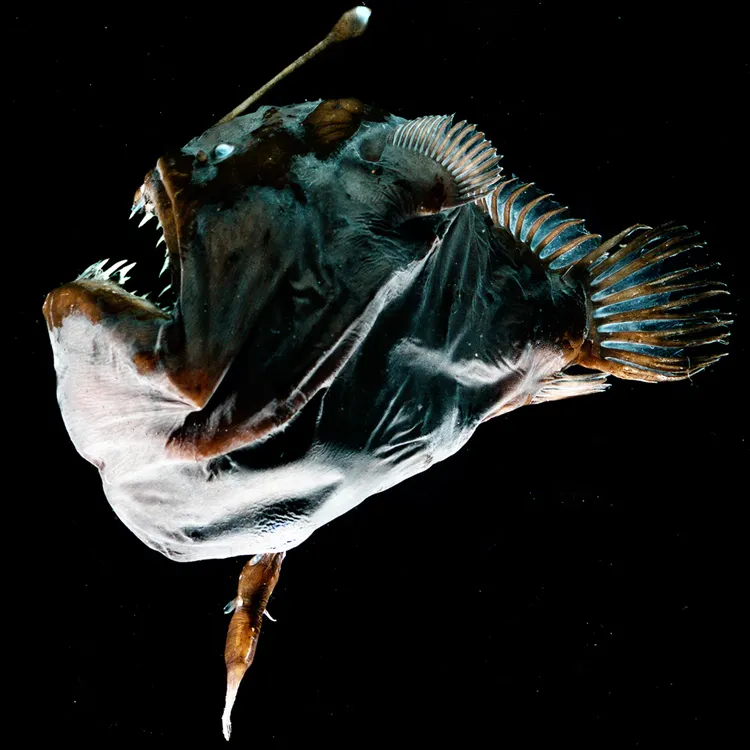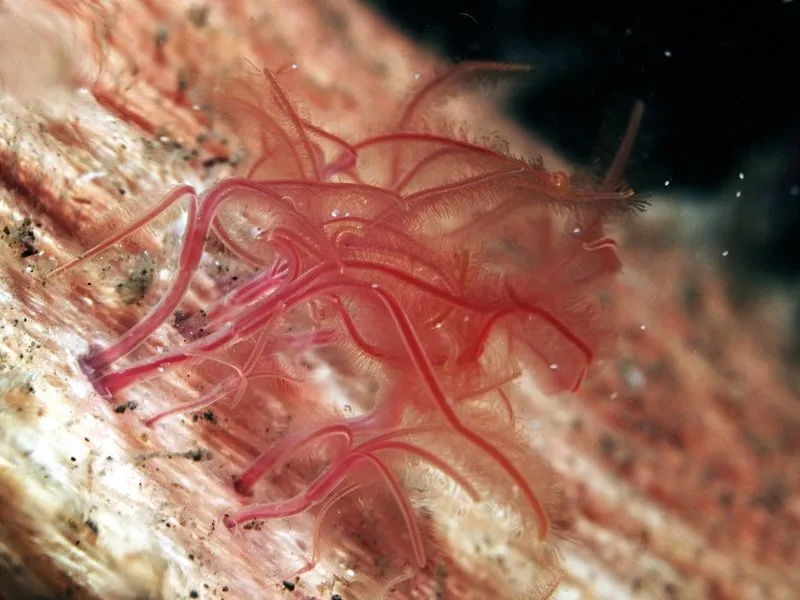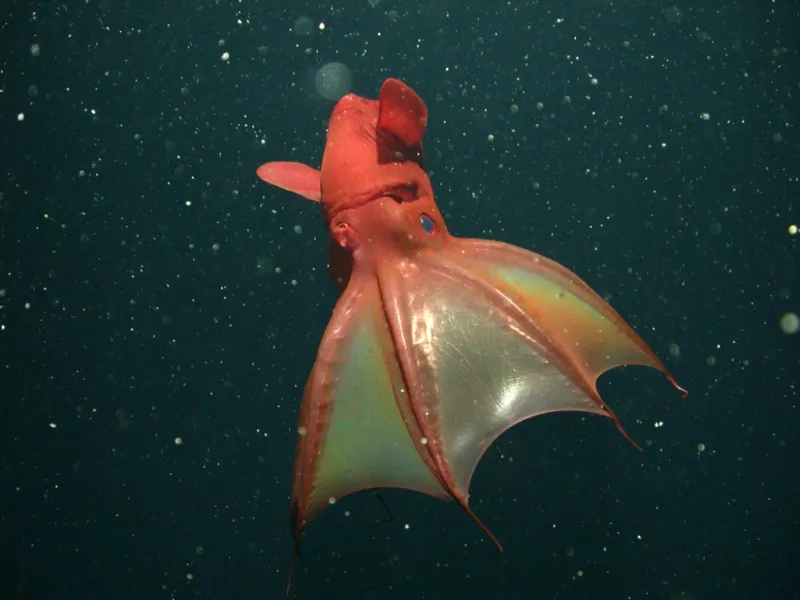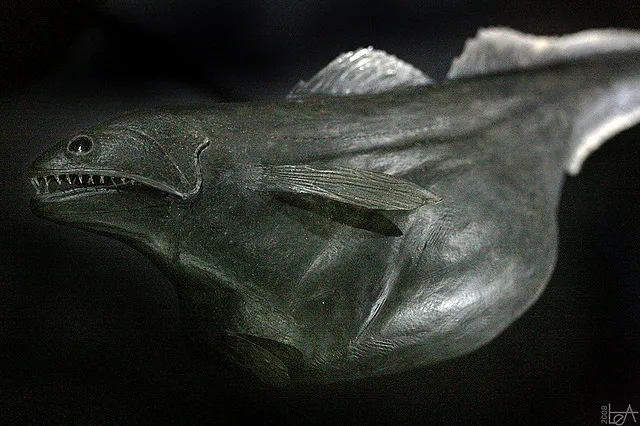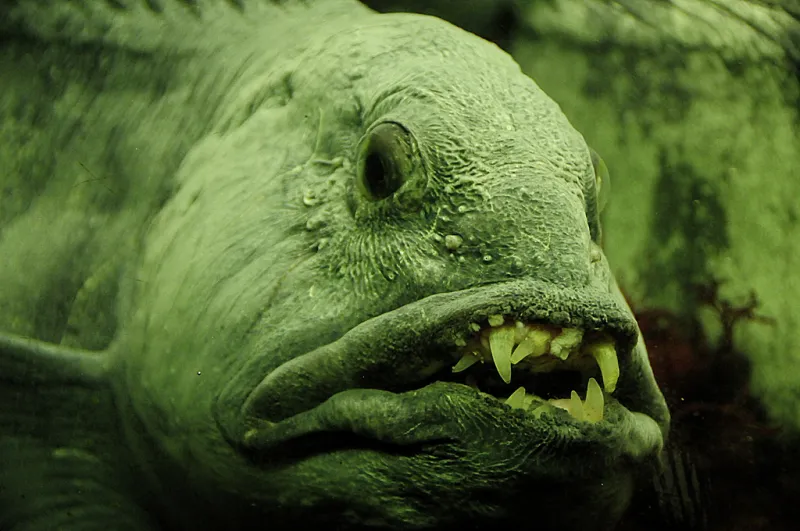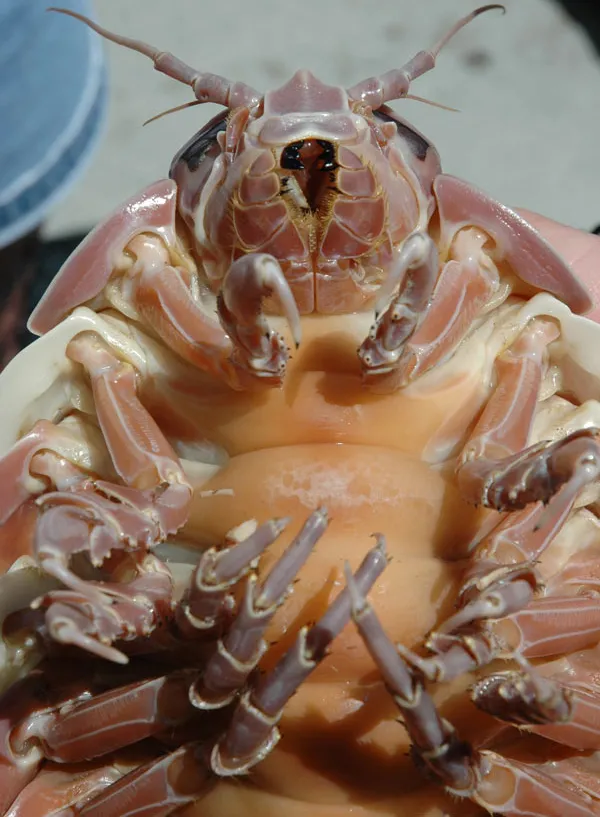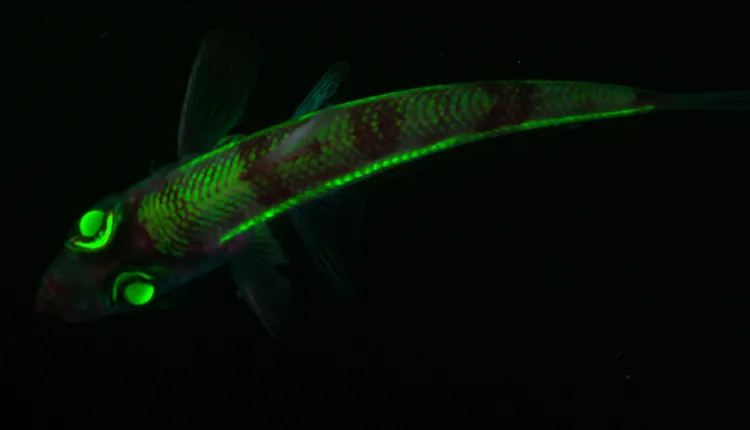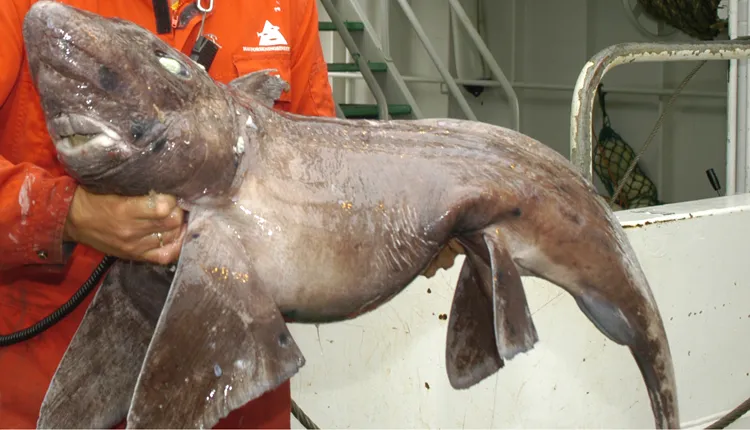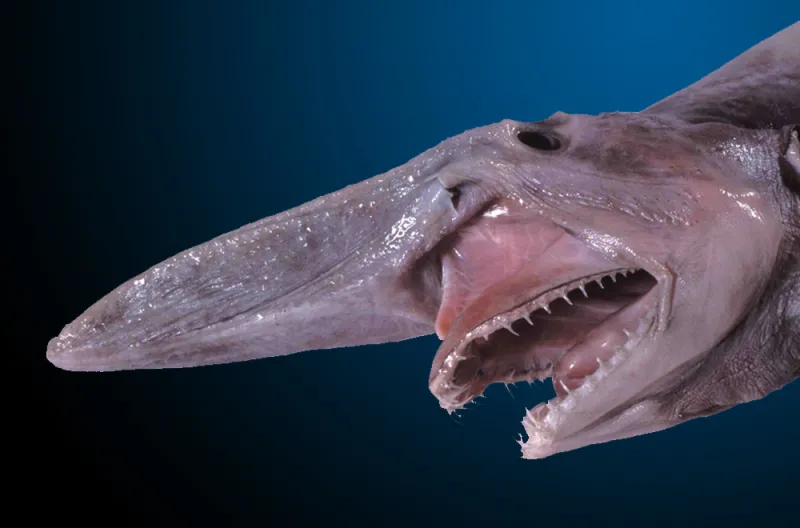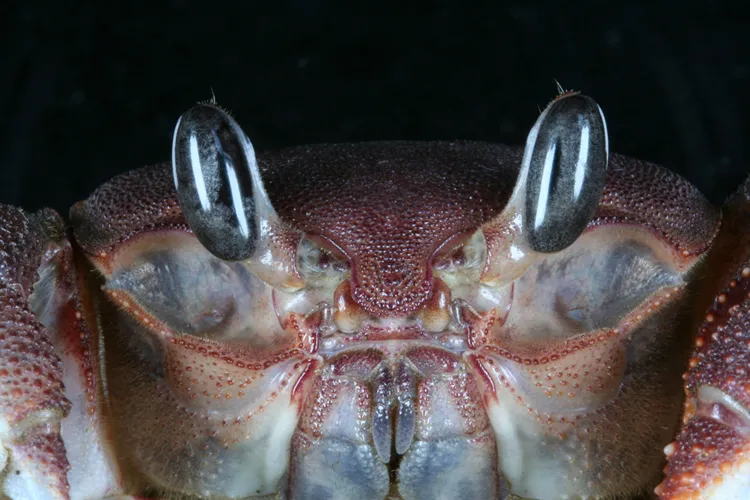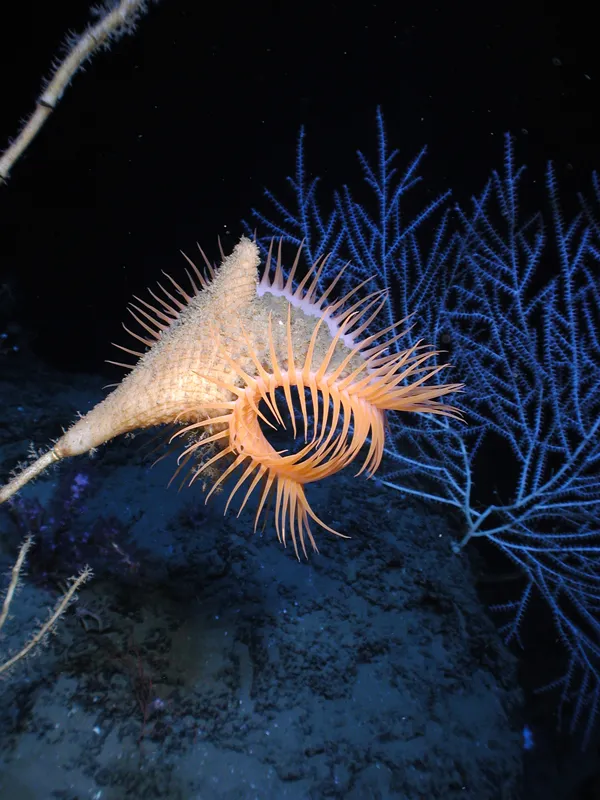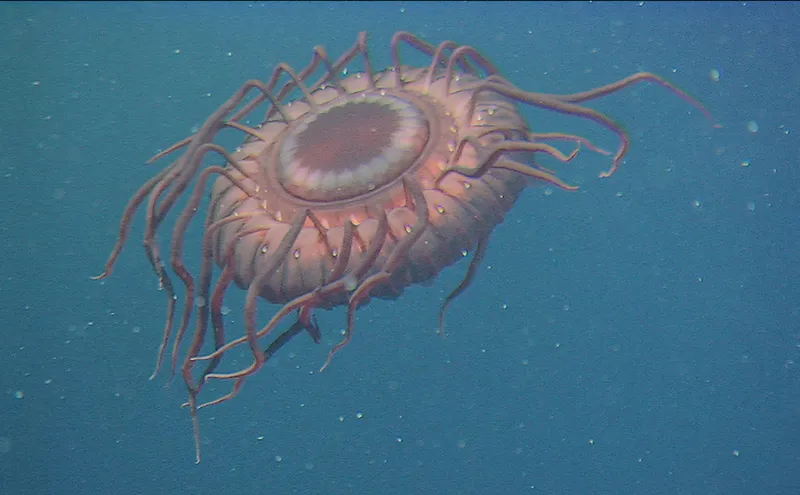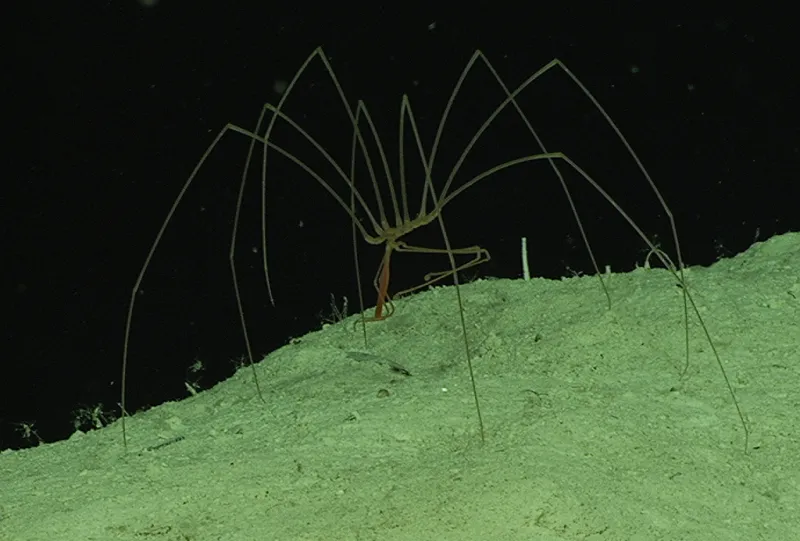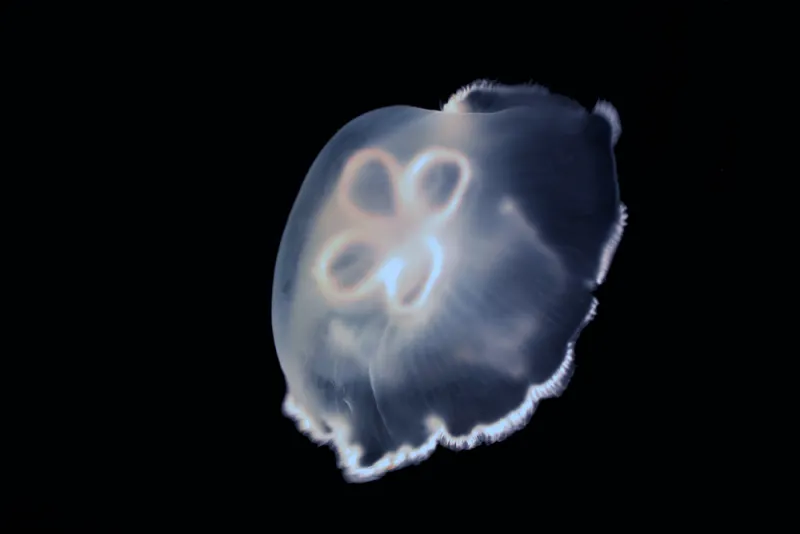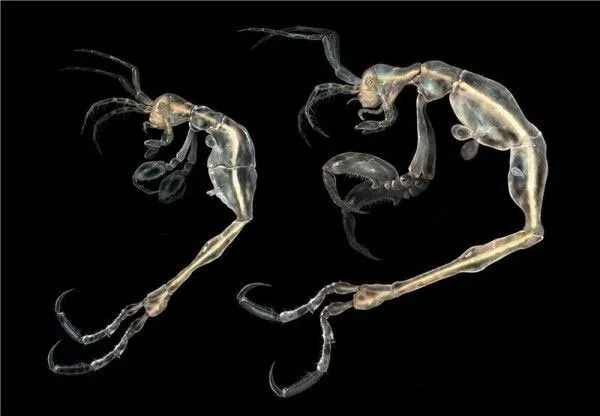This aptly named fish (Anoplogaster cornuta) has long, menacing fangs, but the adult fish is small, reaching only about 6 inches (17 cm) in length. It's teeth are the largest in the ocean in proportion to body size, and are so long that the fangtooth has an adaptation so that it can close its mouth! Special pouches on the roof of its mouth prevent the teeth from piercing the fish's brain when its mouth is closed.
It has been found as deep as 5,000 meters (16,404 feet), making it one of the deepest living fish, but is most common between 500 and 2,000 meters (1,640 and 6,562 feet). During the day it stays in deeper areas of the ocean and at night, migrates up to shallower water to feed. (This is called a diel migration.) Younger, smaller fangtooth fish filter zooplankton from the water and adults feed on fish and squid.
See more bizarre-looking ocean life in the Creepy Critters Marine Life slideshow and learn more in the Deep Ocean Exploration section. You can see a fangtooth specimen on display in the Sant Ocean Hall at the National Museum of Natural History.


